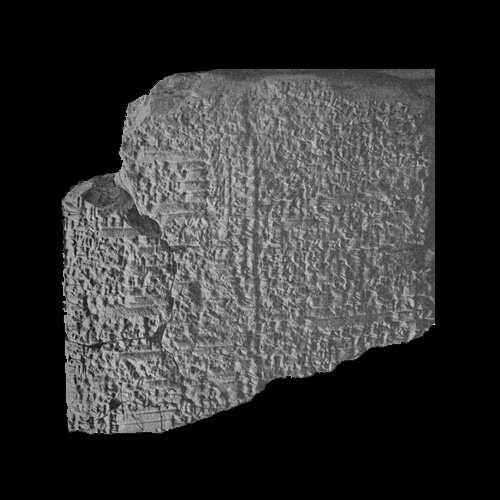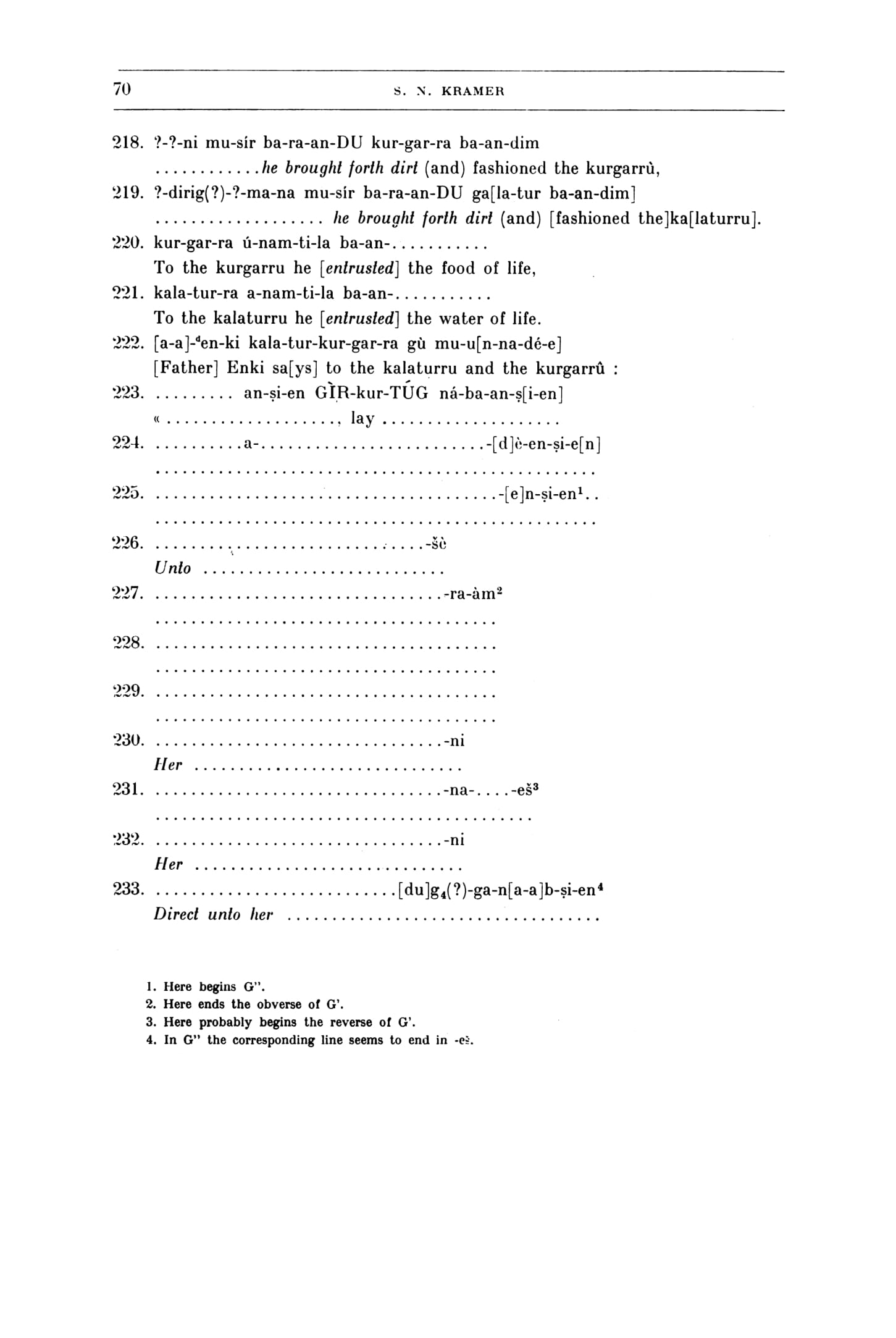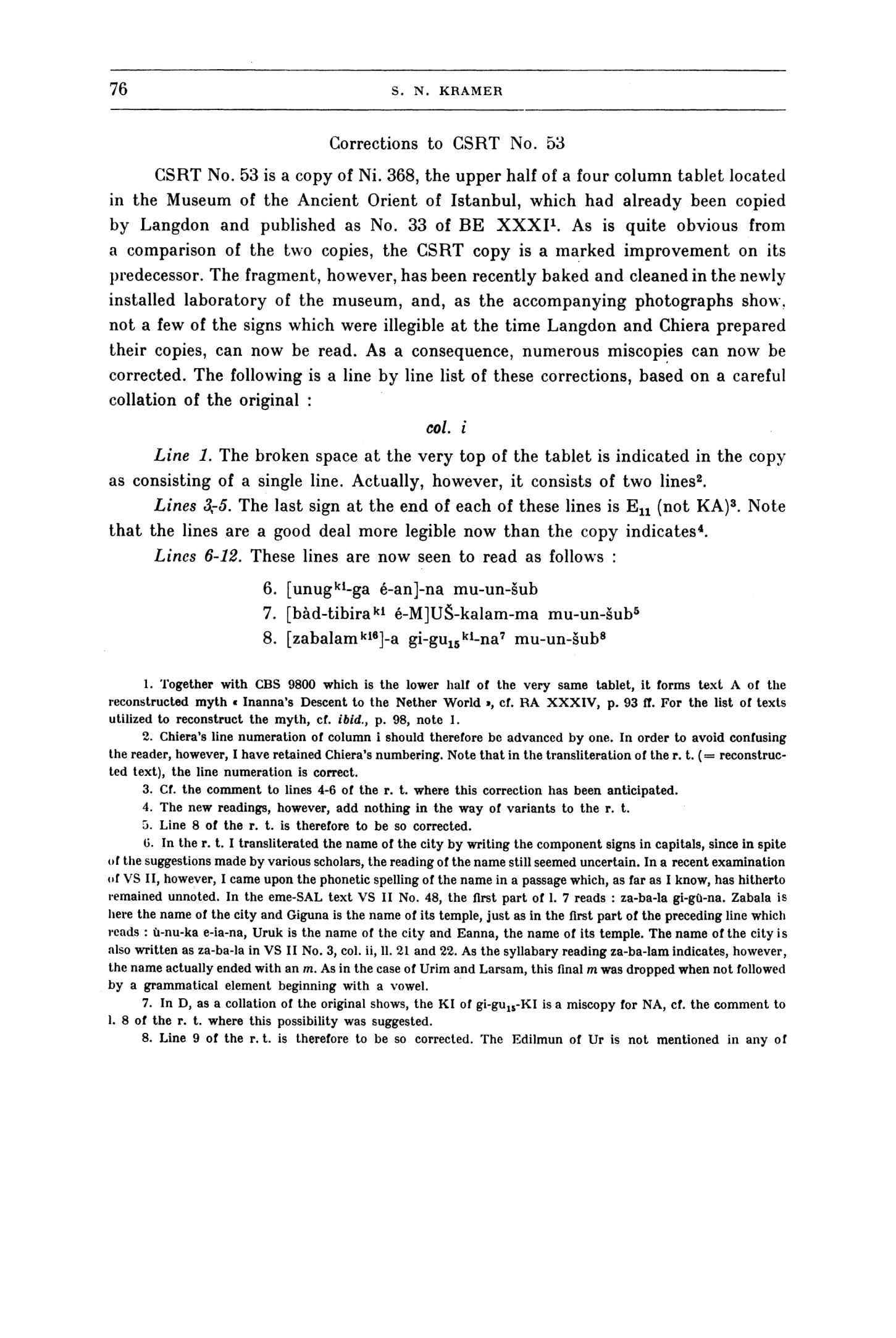About
Access
Read for free
External sources
Primary
Myth
Inanna descends from the great above to the great below. She abandons several temples and heads for open country. She gives precise instructions to her companion—Ninsubur: Inanna says "if I don't return in three days, go to the temples and plead on my behalf." At the netherworld she enters and goes through seven gates before she is turned into a corpse. Ninsubur follows the instructions and tells Inanna's father Enkil what happened. He helps her by sending two a-sexual creatures to sneak in and bring her back to life. Once Inanna is alive she ascends while being escorted by demons from the netherworld. The demons allow her to trade her husband Dumuzi in her place.
Belief system

Sumerian religion refers to spiritual beliefs practiced from ca. 4500-1900 BCE in Mesopotamia, or modern-day southern Iraq. Many deities were diffused into other Mesopotamian cultures.
Deity

Inanna (Sumerian: 𒀭𒈹) was one of the oldest deities in the Sumerian pantheon. She was later adapted into the Akkadian pantheon of deities under the name Ištar.
Translation
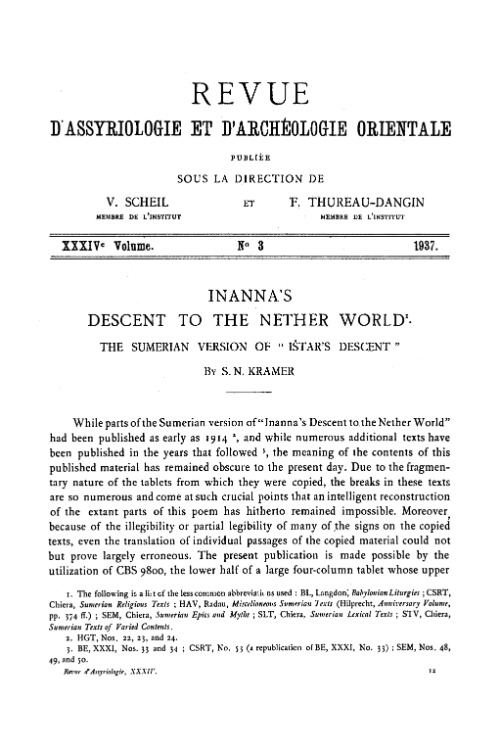
"CBS 9800 / Inanna's Descent: English Translation by Samuel N. Kramer" is a 1937 translation of the "Inanna's Descent to the Netherworld" afterlife myth by Samuel Noah Kramer. The Sumerian myth gained more attention after Kramer published his translation of an artifact named CBS 9800. The broken translation contains roughly 212 lines.
Myths cited
It looks like only the main myth was referenced in this work.
Belief systems cited
It looks like only the main belief system was referenced in this work.
Primary
Artifacts cited
Other works
Journal article · 1951

This 1951 article features a translation of the YBC 4621 clay tablet by Samuel Noah Kramer. This tablet provided some 91 crucial lines for deciphering the Sumerian afterlife myth known as "Inanna's Descent to the Netherworld."
Journal article · 1942

"Sumerian Literature; A Preliminary Survey of the Oldest Literature in the World" is a 1942 journal article by Samuel N. Kramer. The article provided an up-to-date transliteration and translation of the Sumerian afterlife myth named "Inanna's Descent to the Nether World." The article, published in the Proceedings of the American Philosophical Society, also included ten plates, which contained sketches and photographs of cuneiform tablets that Kramer translated.
Journal article · 1937

Kramer's 1937 publication of "Inanna's Descent" featured the publication of a tablet named CBS 9800. It provides 212 lines of the Sumerian afterlife myth, albeit with many lacunae.
Journal article · 1950

This 1950 article features a translation of the YBC 4621 clay tablet by Samuel Noah Kramer. This tablet provided some 91 crucial lines for deciphering the Sumerian afterlife myth known as "Inanna's Descent to the Netherworld."
Book · 1983
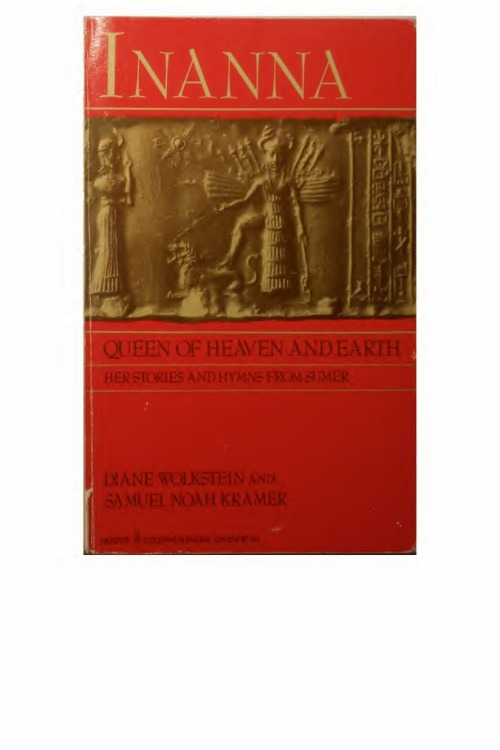
Wolkstein and Kramer's work on the Sumerian deity Inanna includes a contemporary and readable translation of the Inanna's Descent afterlife myth. Kramer is a Sumerologist who has devoted his career to translating the mythology related to Inanna. Wolkstein is a folklorist who contributed.
Library works
Contributor
Cite this work
ChicagoKramer, Samuel N. "ADDITIONAL MATERIAL TO « INANNA'S DESCENT TO THE NETHER WORLD »." Revue d'Assyriologie et d'Archéologie Orientale 36, no. 2 (1939): 68–80.

